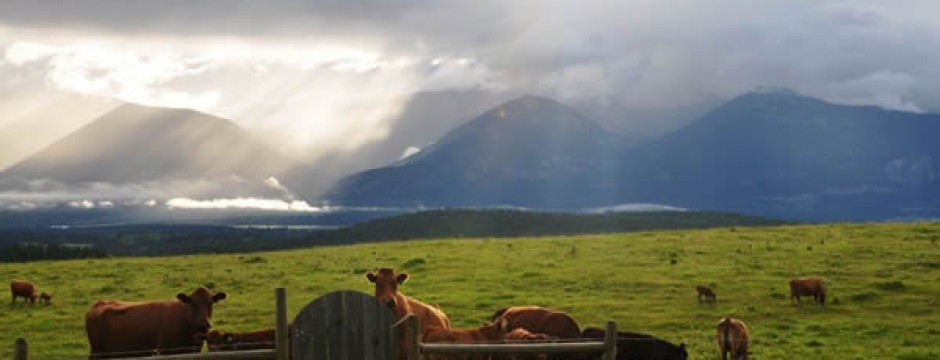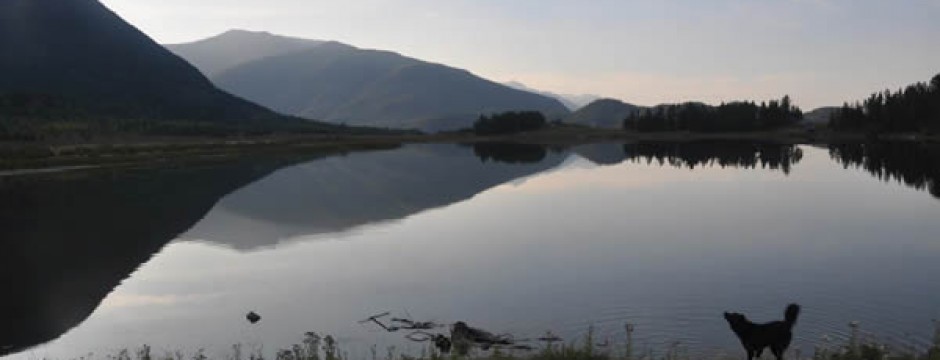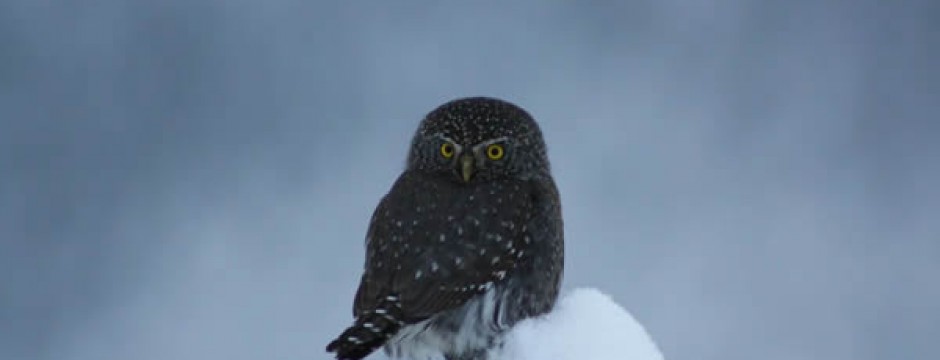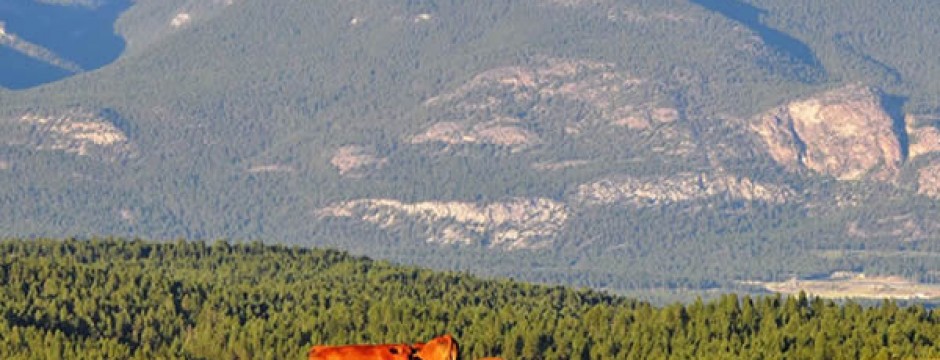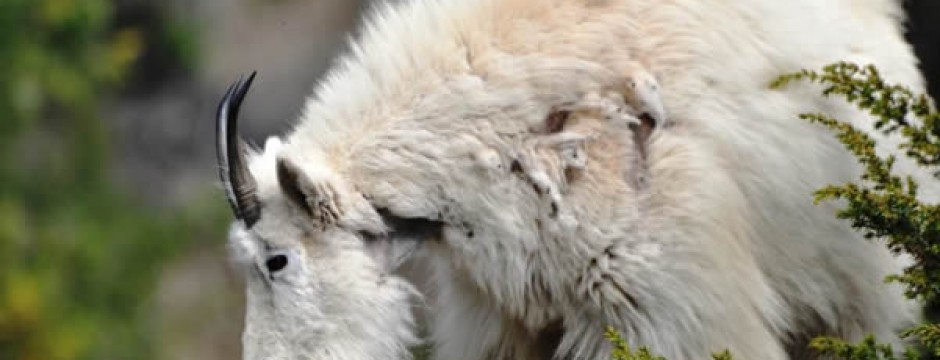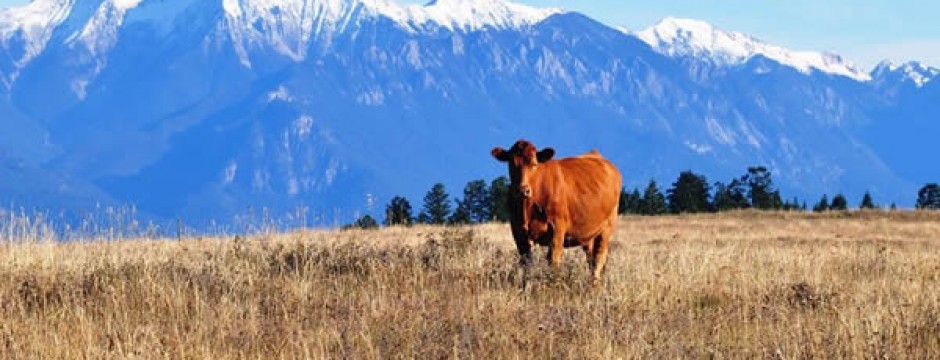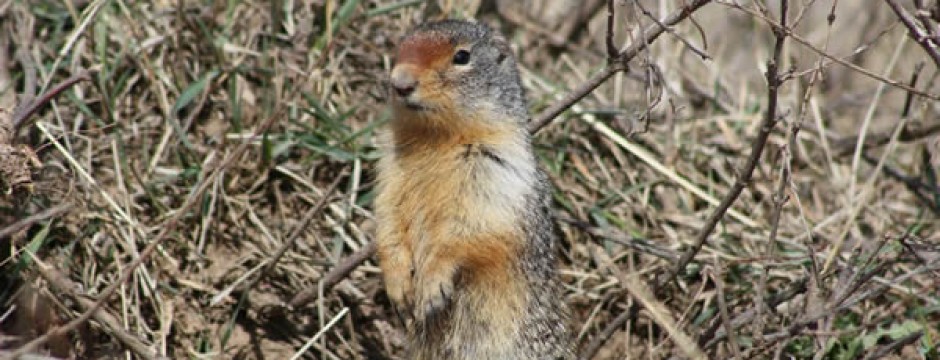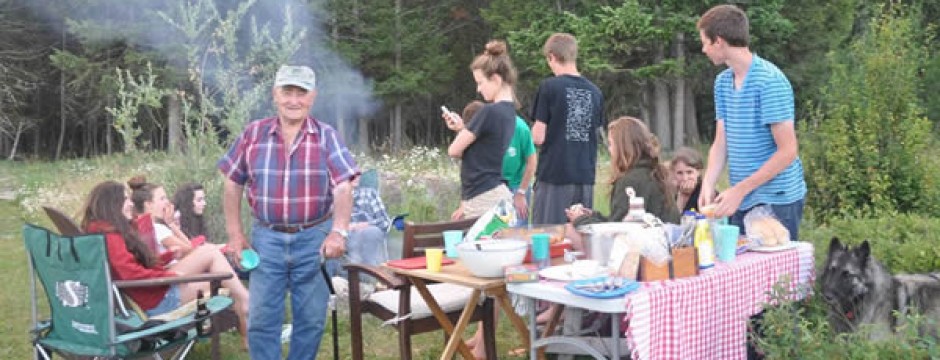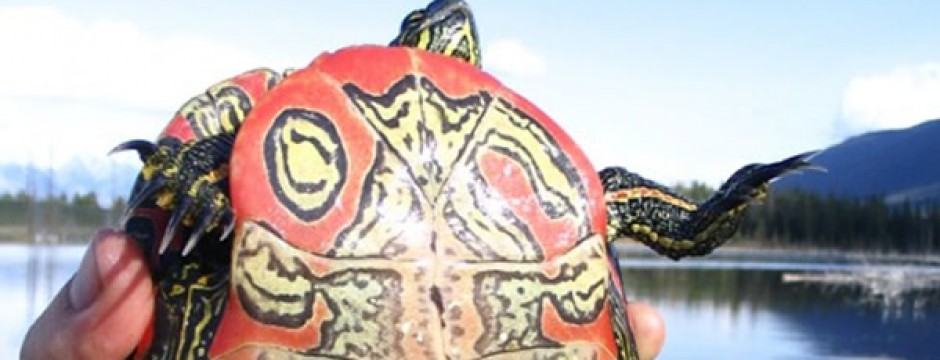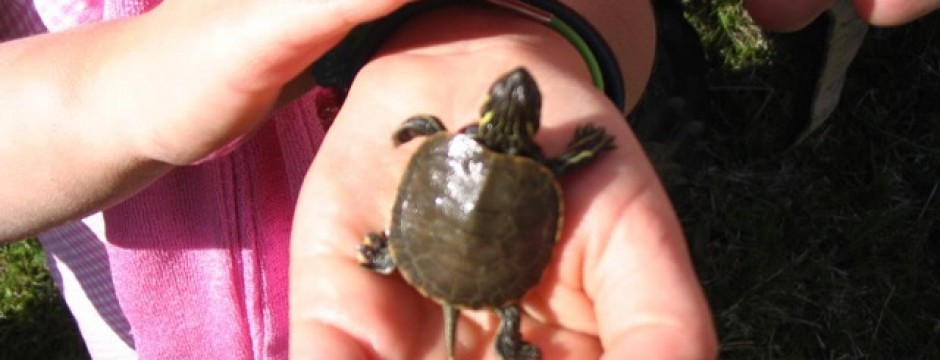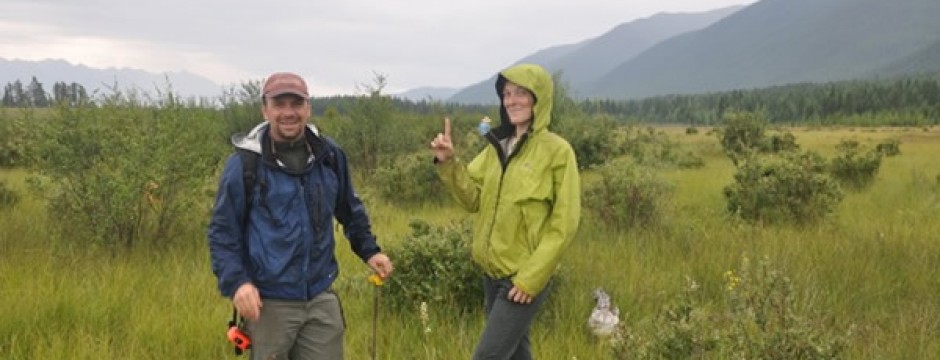Site Description
Name of the site: Zehnder Ranch
Address: Kootenays
Size: 3000 acres
Type of crops/ livestock: Cow-calf operation with 180 mother cows; hay for on-farm use
Number of people employed: 1 to 10 depending on farm activities
Managed property: in the family since 1971
We saw potential for that to work with what we thought was the right thing, how we wanted to farm with the ecology.
~Dave Zehnder
Stewardship Practices Guides
The following guides are relevant to this project site
- Riparian Areas in Settled Landscapes
- Guidance for Restoration Activities in Riparian Areas
- Drainage Maintenance in Agricultural Waterways
Click to download the table for stewardship practices at the Zehnder site.
Stewardship project partners:
Environmental Farm Plan
Columbia Basin Trust
Kootenay Local Conservation Fund
Farmland Advantage
What started with an Environmental Farm Plan (EFP) grew into a province-wide initiative for Dave Zehnder. Using funds from the EFP and the Columbia Basin Trust, the Zehnder ranch fenced off 15 acres of riparian habitat alongside a lake on their property. Dave felt that other farmers and ranchers could also benefit from such projects and put forth his farm’s project as a pilot to test the idea of funding farmers and ranchers to protect key ecosystem services. This work, along with other agricultural consulting work has now become his primary occupation.
After completing the fencing project in 2009, the family participated as a pilot project for the Ecological Services Initiative. They received funding in 2010 to fence off and protect an additional area where they suspected Western Painted Turtle nesting habitat.
Key practices:
1. Protect existing riparian areas – Riparian Areas in Settled Landscapes
2. Protect plantings from wildlife and livestock – Guidance for Restoration Activities in Riparian Areas
3. Monitor and evaluate projects – Drainage Maintenance in Agricultural Waterways
Champions
Dave Zehnder owns Zehnder beef along with his brothers. They worked together to develop a management plan for the property which one of the brothers takes a lead on operating.
Motivation
The Zehnder family created a business plan in 2008 that outlined their core principals, one of which was a concern for the environment and the land. They had recently gone through hard times because of the BSE’s impacts on beef prices. The event hit the farm hard, but they used it as an opportunity to rethink their business strategy. They saw an opportunity in the local food movement to build a brand based on sustainable ranching practices. This would allow them to align their business goals with their personal goals for how to manage the farm.
We saw potential for this to work with what we thought was the right thing to do. We want to farm in a way that is compatible with nature.
One of their first projects after this turn in their business focused on the riparian area around the lake on their property. They knew the area was ecologically important and that the cow’s overuse of it was starting to damage to the shoreline’s vegetation and ecology. But it was a local bird festival that really drove the point home.
There’s a bird festival here every year, which includes a contest to see who can count the most birds. One year my brothers and I decided to participate in it just for fun. That day we surveyed huge areas of land and only picked up a few species. But when we got to this thin strip of land along the lake we were amazed by how many birds and the diversity of species that we observed. We knew this lakeshore was ecologically important but the survey proved it. The results just bowled us over. It made it very tangible, it was all there in the numbers.
This experience cemented the family’s desire to protect the riparian area around their lake with a fence and allow the vegetation to recover. As well as the ecological benefits, this project fit well with the family’s “whole philosophy and business acumen,” explains Dave Zehnder. The project also allowed the family to make their land more beautiful.
Lakes and water bodies for a lot of people have spiritual or aesthetic value and even an experiential connection. Why is waterfront so valuable? Why do people want to build beside lakes? I think it is because these areas are more than just a nice thing to look at, they also an amazing experience.
Challenges
Protecting the riparian area, however, was no easy or inexpensive project. The $25,000 cost of the fence would have been difficult to justify as a business expense, particularly given low cattle prices at the time due to BSE. However, the family was able to receive cost-share funding from the Environmental Farm Plan and the Columbia Basin Trust.
The first challenge came about as the fence was going in. The fencing contractor discovered the area was rockier than he had budgeted for. So Dave rolled up his sleeves and helped with the installation to make the project work financially. The difficulty in estimating costs and prices is a key challenge Dave has found in implementing stewardship practices. In an industry in which prices can fluctuate five times larger or smaller, it is difficult to estimate if a project will ever pay itself back, let alone when.
For example, while the family is still happy with their riparian area, they felt the cost of losing those 15 acres of grazing habitat last year. A drought year forced them to buy feed, and at exorbitant prices. Meanwhile, the grass behind the fence was lush and green, protected from grazing and well fertilized because the cows preferred to spend time under the shade of its trees and deposited their manure close to the riparian area.
Outcomes
To watch the area come back over time was really exciting. There was no understory vegetation, it was all eliminated by intensive cattle use and now all those willows and poplars are coming back.
As part of his work on the Ecological Services Initiative, Dave has brought in conservation and university groups to monitor the outcomes of the project. Some of the most exciting outcomes have been:
Water Quality ImprovementsA local watershed group tested the water quality in an area that was fenced off and in another non-fenced area and found dramatic results. The E. coli levels in the non-fenced area were worse than the standards for cattle drinking water, yet in the fenced area, the E. coli levels were almost at human drinking water standards. This was not only good news for the health of the herd but also for the health of the Zehnder family which also used the lake for swimming.
Lewis Woodpecker Sighting
One unexpected sign of success for the Zehnders was the recent arrival of the endangered Lewis Woodpecker in their riparian area. They had protected the area for general biodiversity and the bird’s core habitat had been identified as elsewhere. But recently, one of the Zehnder brothers that enjoy birding was driving by the riparian area on their property and saw a Lewis Woodpecker, a SARA listed species.
And there it was in the area that we’d fenced off. It was a beautiful thing. It was the icing on the cake. Here’s this endangered species showing up. It was really powerful for me, and really encouraging to me that the recovery of the area could have all these benefits.
Positive Media Exposure and Social License for the Business
The work the Zehnders have done for stewardship has also been helpful for their business. It has also given them media exposure as part of the Ecological Services Initiative, including a visit from the Minister of Agriculture and the local Mayor.
This is the type of thing that helps give you social license and build your brand from a hard and fast business perspective. It provides legitimacy to your claim of being an environmentally friendly operation.
Stewardship Practices Menu
Learn more about Species at Risk
Stewardship Practices Case Studies
Fraser Valley & Lower Mainland Sites
Kootenay Sites
Okanagan Sites
Vancouver Island Sites
Contact Information
Find us on social media
LinkedIn: @StewardshipCentreBC YouTube: @stewardshipcentreforbc1047 Instagram: @StewardshipBC

